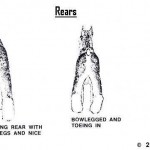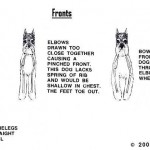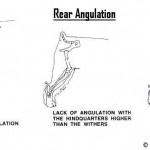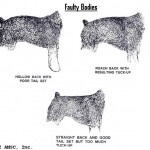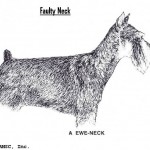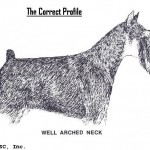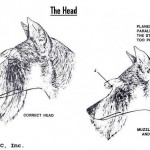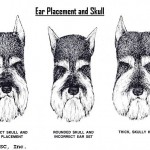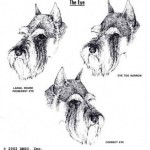Spectators;
When attending shows as a spectator, please remember, small children ringside can be very distracting for the dogs so please keep your children very quiet. These dogs only have a very short few minutes to show off to the judge so distractions can be a detriment for their chance of a win.
Also, if you would like to pet any dogs being shown that day, please ask the exhibitor if you may touch before reaching out to touch any dog. A great deal of time and energy goes into grooming, petting can change the final set of a coat.
There may be some that have only a short time to be in the ring and may not have time to speak with on looker’s so if you would like to talk to an exhibitor about their breed, simply ask if or when it is a good time to speak to them. Most are very happy to share information about their breed if you catch them at a good time.
Before explaining points, lets go over a few things about breed standard. Breed standard is what the judge is looking for when judging a show. Realizing that no dog is perfect, the judges goal is to select the dog that best conforms to breed standard. A “conformation” dog show is NOT a “beauty” contest or should I say, its not about “beauty” alone however, when a dog comes together correctly, beauty should follow but again, judges are looking for all the specifics of breed standard all coming together in one dog! No one trait such as color, coat or over all beauty is what makes a dog a winner. The purpose behind showing is for the betterment of a breeding program hence the betterment of the breed. When we better a breed, we all have the opportunity to have a healthier dog. Poor bone structure is just the start. Below are a few of the highlights that can be found on the AMSC website at http://amsc.us
Click on each photo for a larger view. Then hit your back button to return to this page.
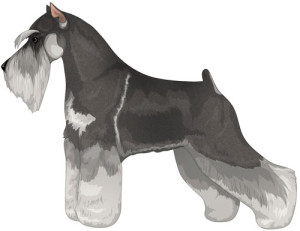
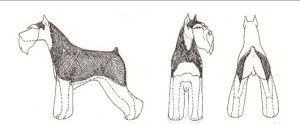
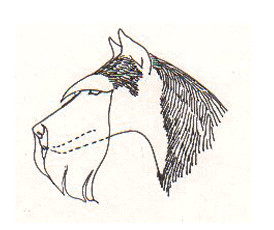
How points are calculated with AKC conformation showing.
Best explained HERE with links for additional info pages.
TERMS explained:
Each dog presented to a judge is exhibited (“handled”) by its owner, breeder or a hired professional. The role of a handler is similar to that of a jockey who rides a horse around the track and, hopefully, into the winner’s circle.
Most dogs in competition at conformation shows are competing for points toward their AKC championships. It takes fifteen points, including two majors (wins of three, four or five points) awarded by at least three different judges, to become an American Kennel Club “Champion of Record.”
The number of championship points awarded at a show depends on the number of males (“dogs”) and females (“bitches”) of the breed actually in competition. The larger the entry, the greater the number of points a male or a female can win. The maximum number of points awarded to a dog at any show is 5 points.
Males and females compete separately within their respective breeds, in seven regular classes. The following classes are offered, and are divided by sex:
Puppy – For dogs between six and twelve months of age, that are not yet champions (optional class).
Twelve-To-Eighteen Months – For dogs twelve to eighteen months of age, that are not yet champions (optional class).
Novice – For dogs six months of age and over, which have not, prior to the date of closing of entries, won three first prizes in the Novice Class, a first prize in Bred-by-Exhibitor, American-bred, or Open Classes, nor one or more points toward their championship (optional class).
Amateur-Owner-Handler – For dogs that are at least six months of age that are not champions. Dogs must be handled in the class by the registered owner of the dog and is limited to exhibitors who have not, at any point in time, been a professional dog handler, AKC approved conformation judge, or employed as an assistant to a professional handler (effective January 1, 2009) (optional class).
Bred By Exhibitor – For dogs that are exhibited by their owner and breeder, that are not yet champions (optional class).
American-Bred – For dogs born in the United States from a mating which took place in the United States, that are not yet champions (mandatory class).
Open – For any dog of the breed, at least 6 months of age (mandatory class).
After these classes are judged, all the dogs that won first place in a class compete again to see who is the best of the winning dogs. Males and females are judged separately. Only the best male (Winners Dog) and the best female (Winners Bitch) receive championship points. The Winners Dog and Winners Bitch then compete with the champions for the Best of Breed award. At the end of the Best of Breed Competition, three awards are usually given:
Best of Breed (BB)- the dog judged as the best in its breed category.
Best of Winners (BW)- the dog judged as the better of the Winners Dog and Winners Bitch.
Best of Opposite Sex (BO or BOS)- the best dog that is the opposite sex to the Best of Breed winner.
Dog shows are a process of elimination, with one dog being named Best in Show at the end of the show.
Only the Best of Breed winners advance to compete in the Group competitions. Each AKC-recognized breed falls into one of seven group classifications. The seven groups are Sporting, Hound, Working, Terrier, Toy, Non-Sporting and Herding. Four placements are awarded in each group, but only the first-place winner advances to the Best In Show competition.
The Seven Groups in All-Breed Shows
Sporting – These dogs were bred to hunt game birds both on land and in the water. The breeds in this group include Pointers, Retrievers, Setters and Spaniels.
Hounds – These breeds were bred for hunting other game by sight or scent. These breeds include such dogs as Beagles, Bassets, Dachshunds and Greyhounds.
Working – These dogs were bred to pull carts, guard property and perform search and rescue services. Among the breeds in this group are the Akita, Boxer, Doberman Pinscher and St. Bernard.
Terrier – This group includes breeds such as the Airedale, Cairn Terrier and Scottish Terrier. Terriers were bred to rid property of vermin such as rats.
Toy – These dogs were bred to be household companions. This group includes little dogs such as the Chihuahua, Maltese, Pomeranian and Pug.
Non-Sporting – This diverse group includes the Chow Chow, Bulldog, Dalmatian and Poodle. These dogs vary in size and function, and many are considered companion dogs.
Herding – These dogs were bred to help shepherds and ranchers herd their livestock. The Briard, Collie, German Shepherd Dog and Old English Sheepdog are some of the breeds in this group.
Finally, the seven group winners are brought into the ring where they compete for Best In Show, the highest award at a dog show.

